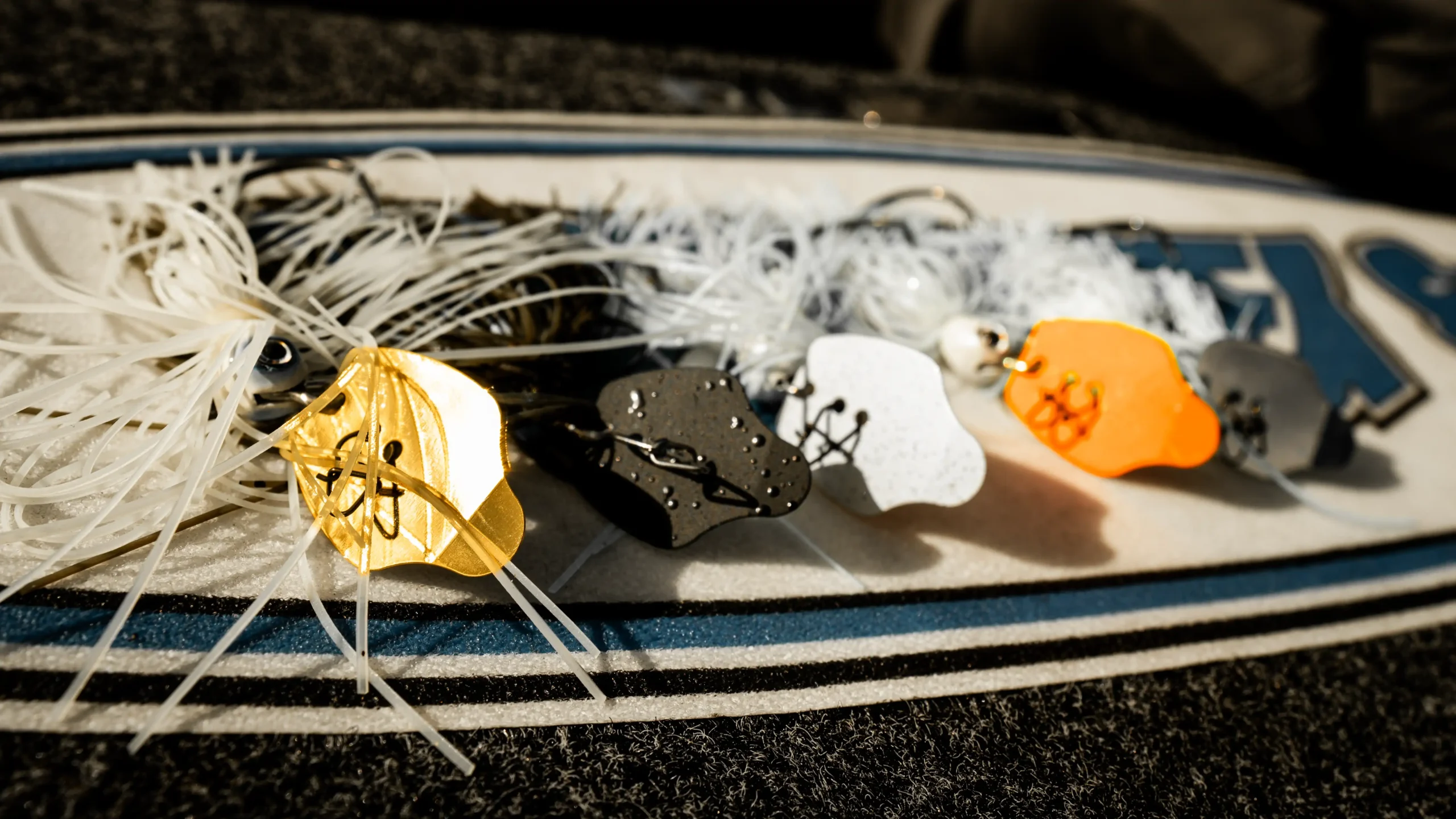Bass fishing legend Mark Davis explores fishing with bladed jigs, arguably the most popular bait going right now. But along with popularity comes fish conditioning, thus the need for experimentation. From heavy fishing pressure to water clarity and sky conditions, Davis provides insights on choosing bladed jig blade and skirt colors to keep things fresh.
TACKLE USED (retail links)
- BLADED JIG – Strike King Tungsten Thunder Cricket Vibrating Jig: Buy at Bass Pro Shops, Buy at Tackle Warehouse
- BLADED JIG – Strike King Thunder Cricket Vibrating Jig: Buy at Bass Pro Shops, Buy at Tackle Warehouse
- Check out our Strike King Thunder Cricket Review
- Check out all Bladed Jigs at Bass Pro Shops
- Check out all Bladed Jigs at Tackle Warehouse
THE RISE OF BLADED JIGS
Bladed jigs have become a staple in the bass fishing world, effectively replacing spinnerbaits for many anglers. Davis discusses how these lures rapidly gained popularity across various conditions.
Versatility and Effectiveness
- Seasonal Flexibility: Davis stresses that bladed jigs aren’t just for spring or fall but are effective year round.
- Species Adaptability: These lures attract all three bass species: largemouth, smallmouth, and spotted bass, proving their adaptability in different waters.
IMPORTANCE OF BLADE COLOR
Choosing the right blade color is crucial for success in bladed jig fishing. Davis showcases different Thunder Cricket color options, explaining how each hue can impact your catch rate.
Matching Blade to Conditions
- Color Variations: From gold to fluorescent orange, Davis explains how subtle changes in blade color can make a significant difference, especially in stained water or when imitating specific baitfish.
- Water Clarity Considerations: For clear water, more natural colors usually work best, while stained and muddy conditions may require brighter, more visible options.
COLOR SELECTION CONSIDERATIONS
Davis advises selecting jig colors based on factors including water clarity, sky conditions, and the type of forage. While black and blue are his go-to colors for stained water, green pumpkin is a preferred choice because of its natural look. Davis stresses the importance of matching the jig to the prevalent baitfish or forage in the area, enhancing the lure’s effectiveness.












